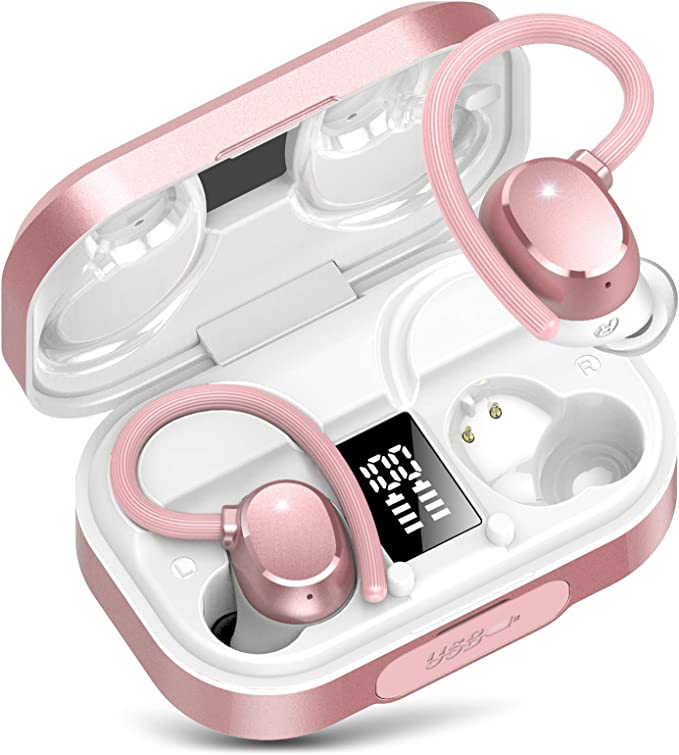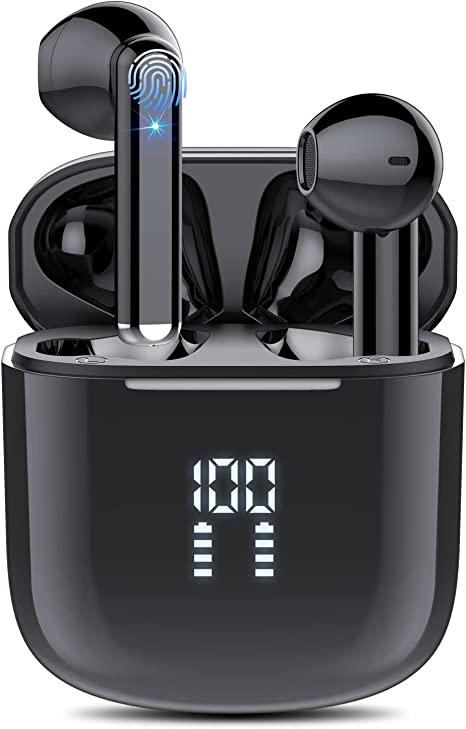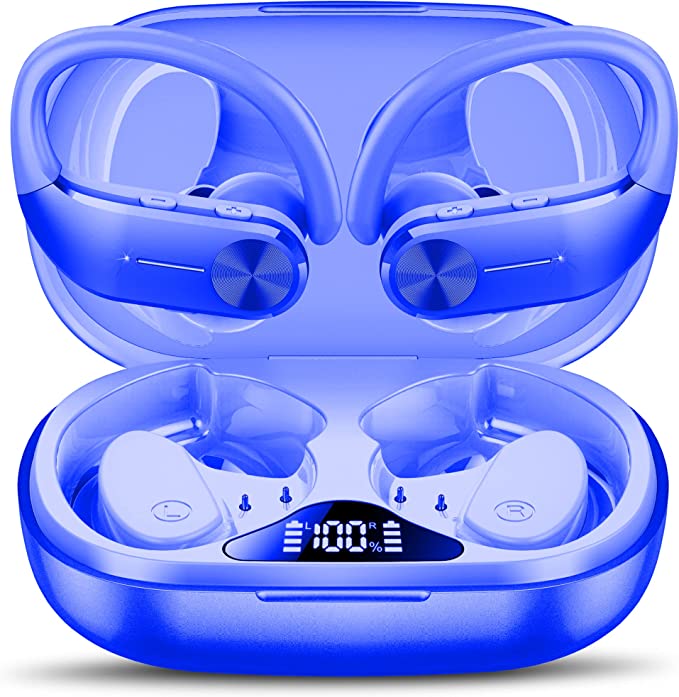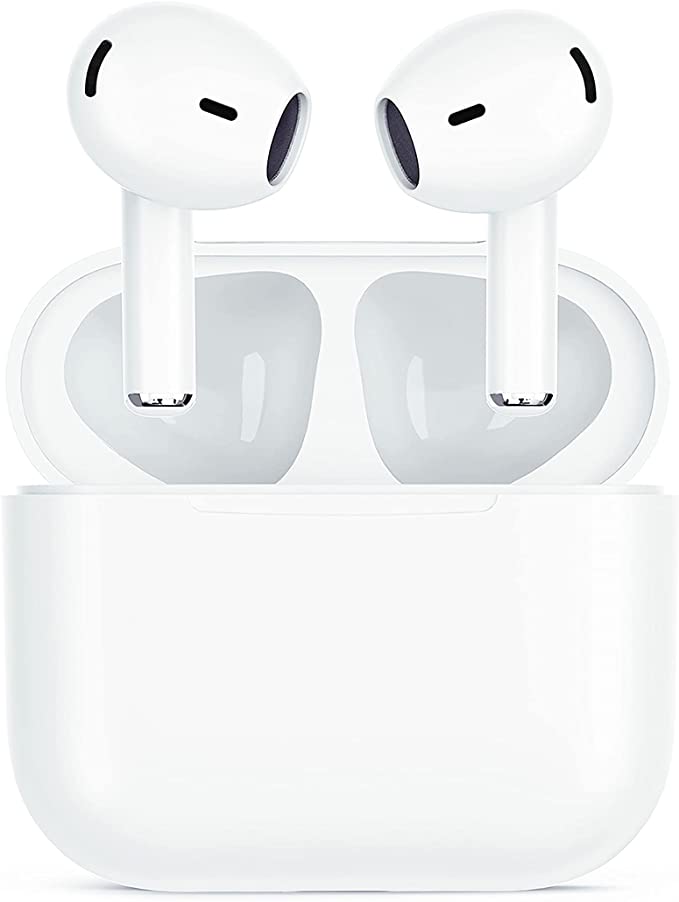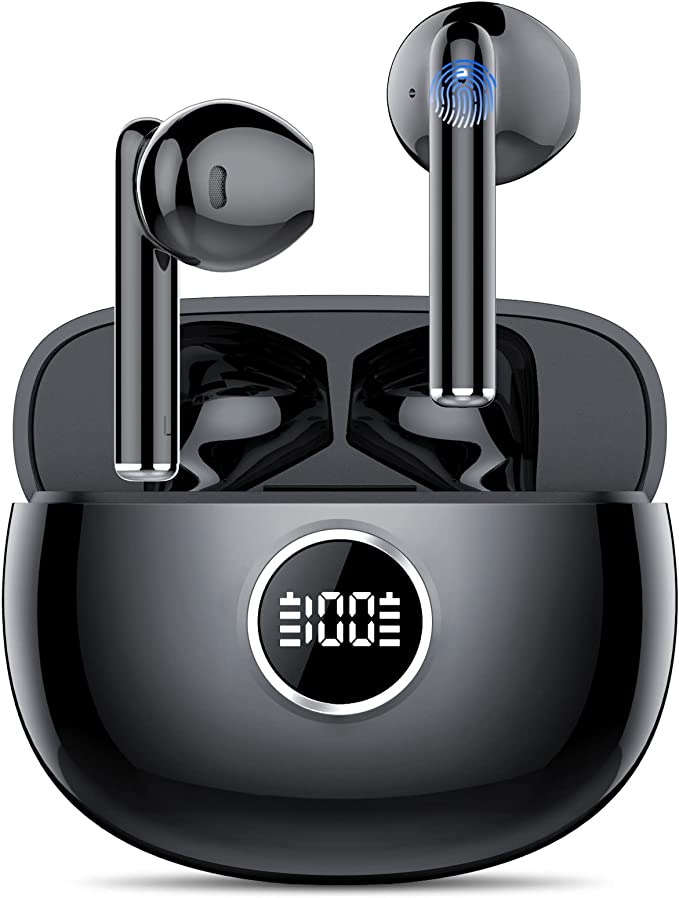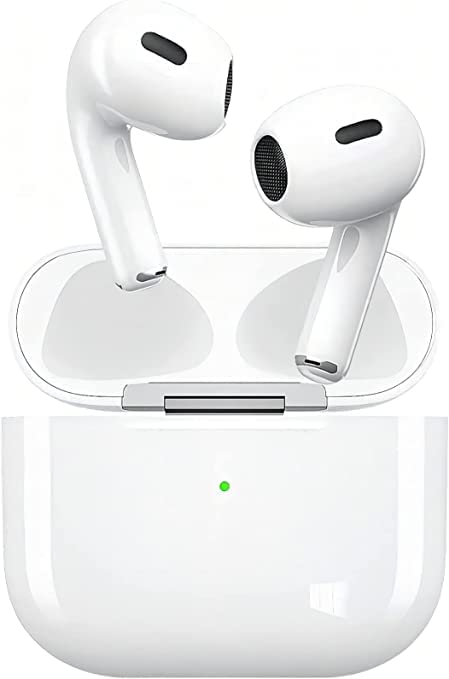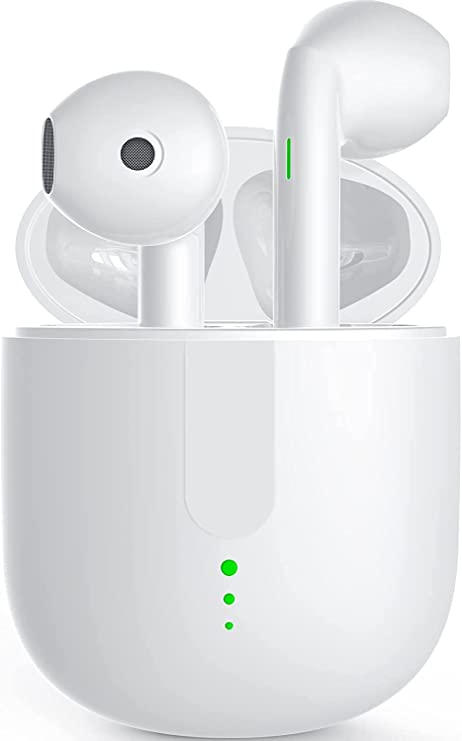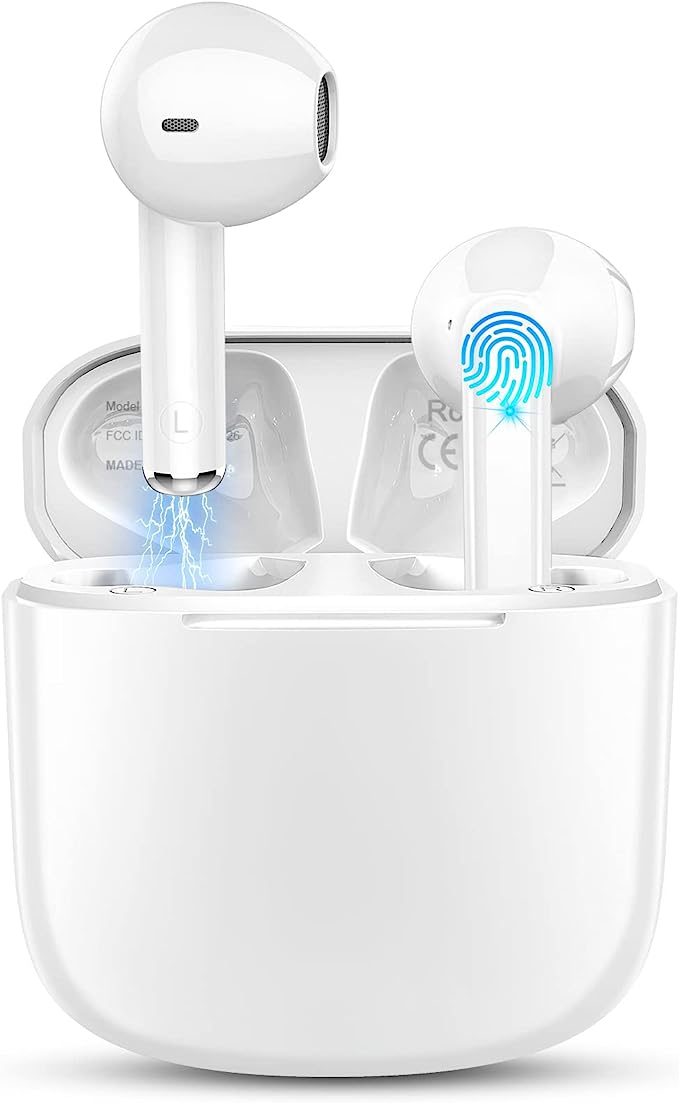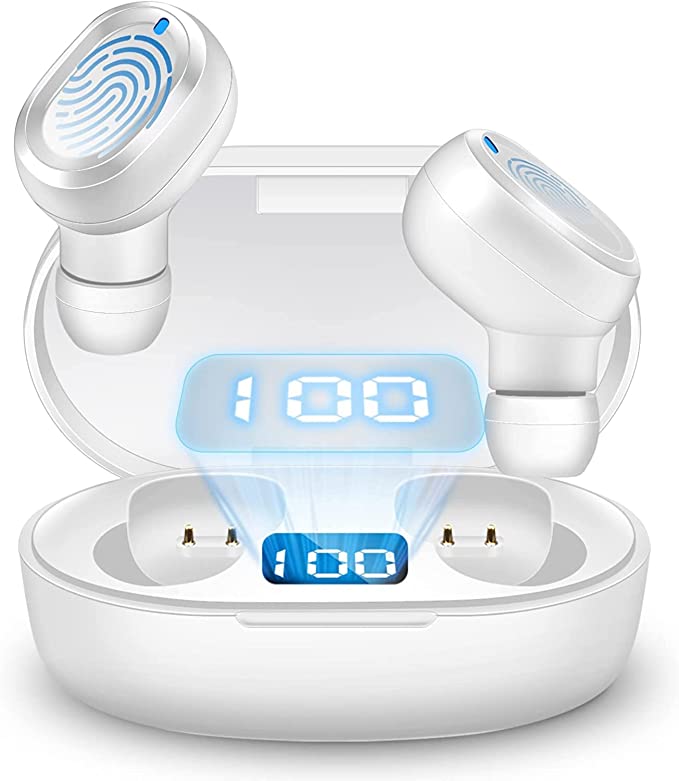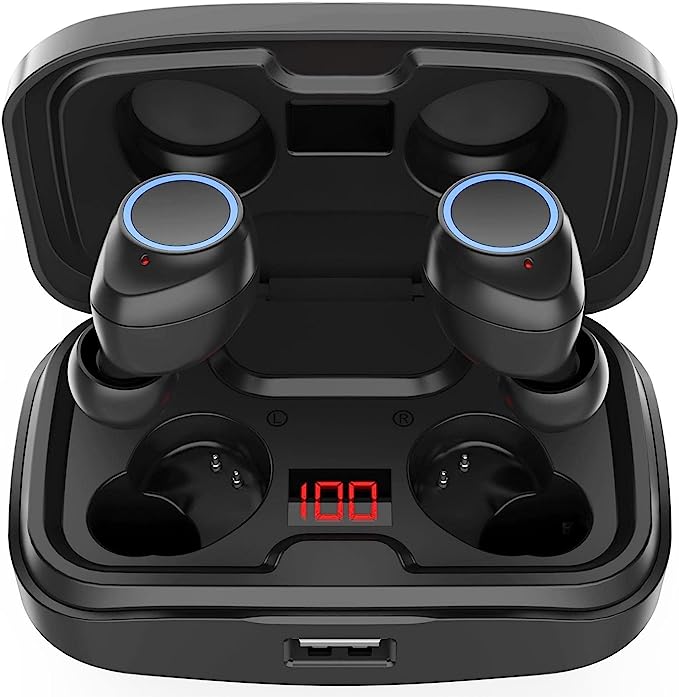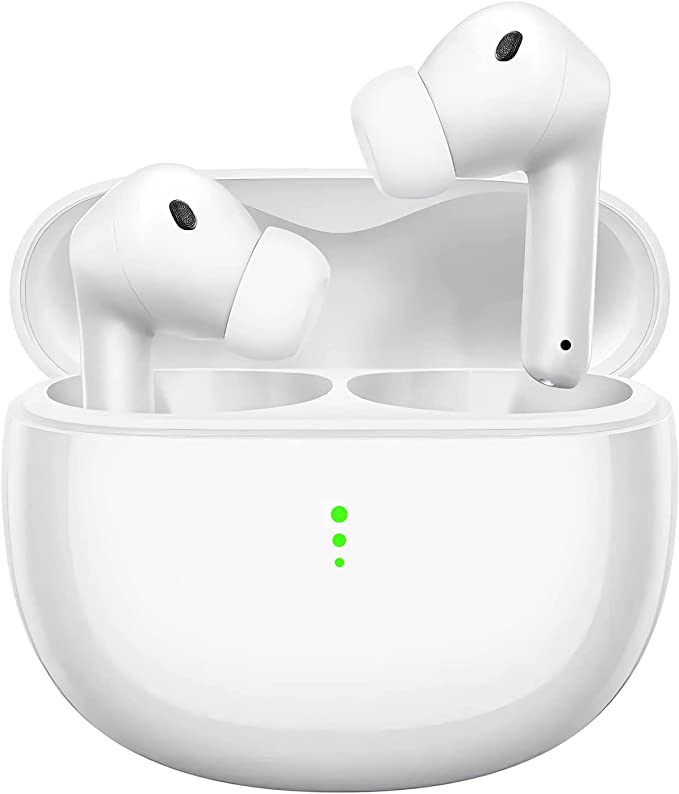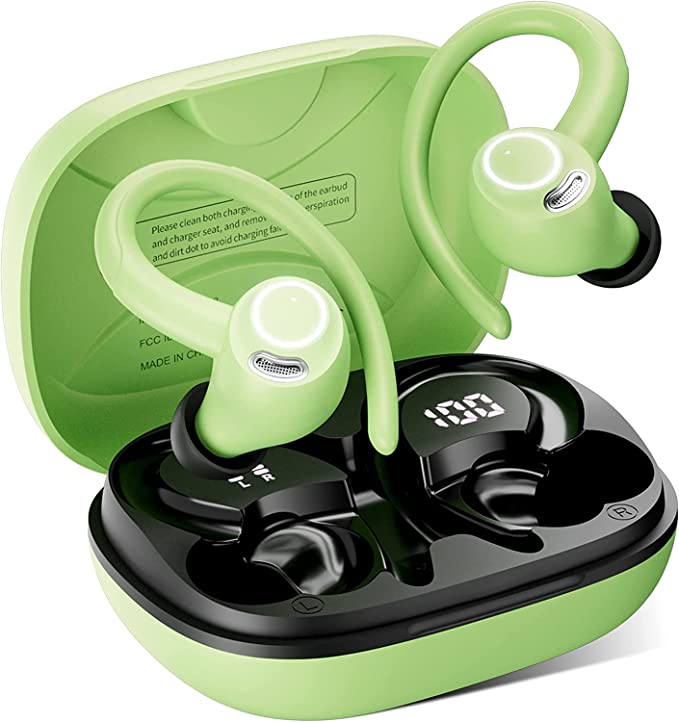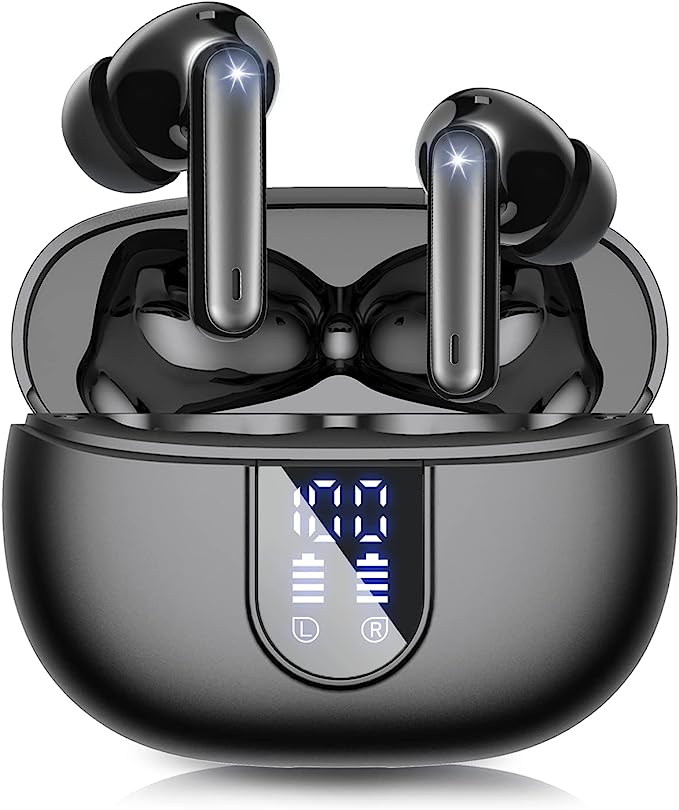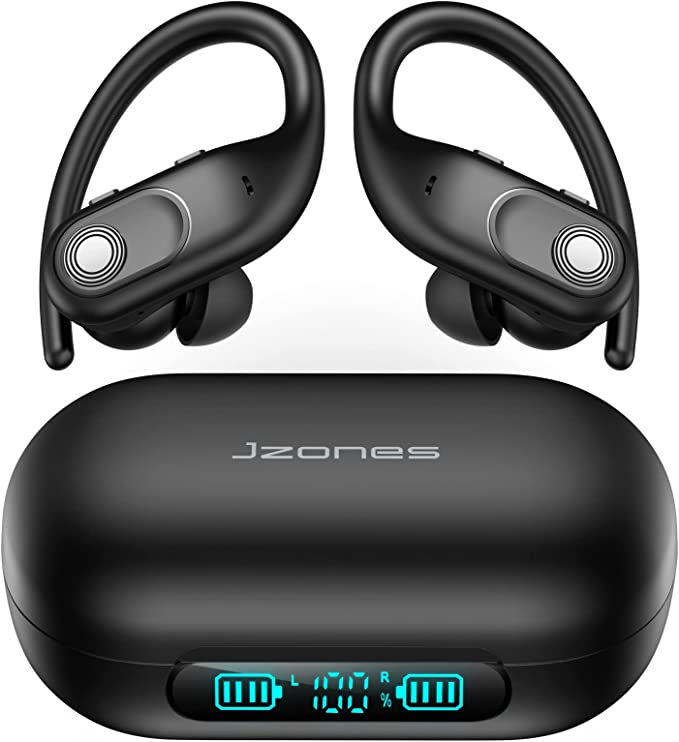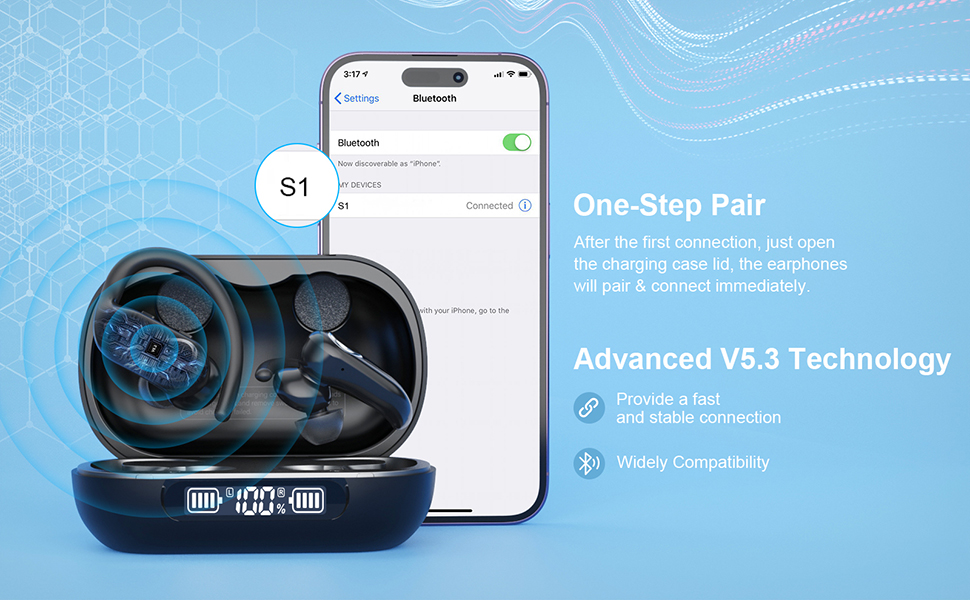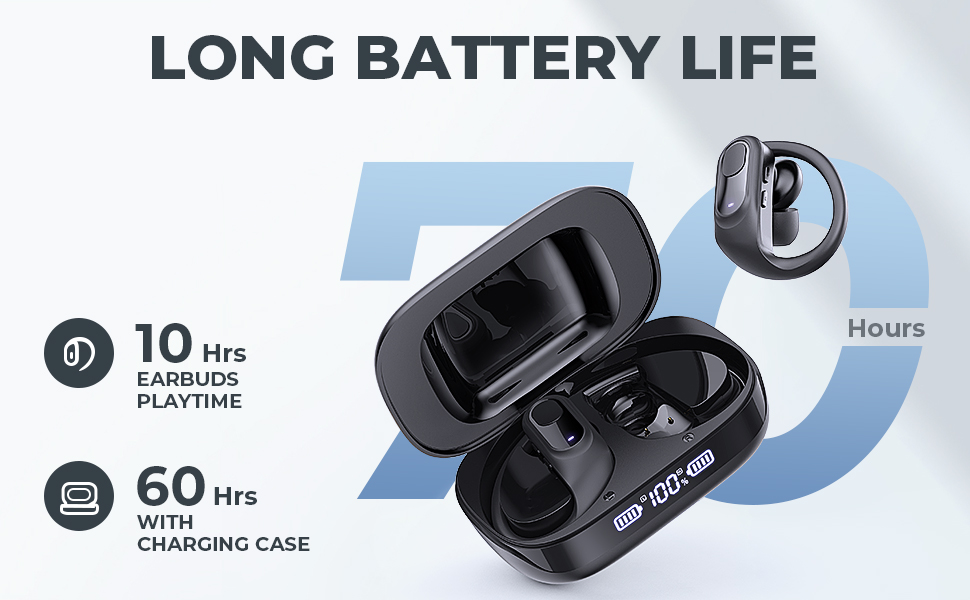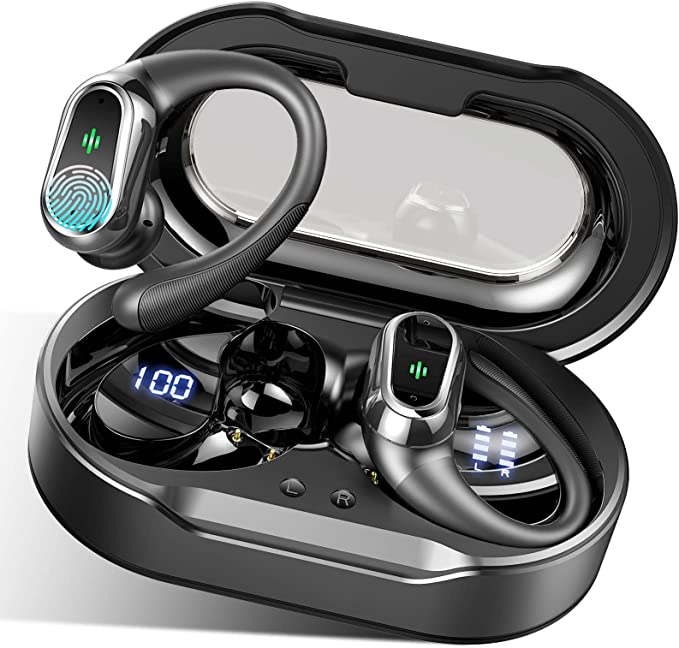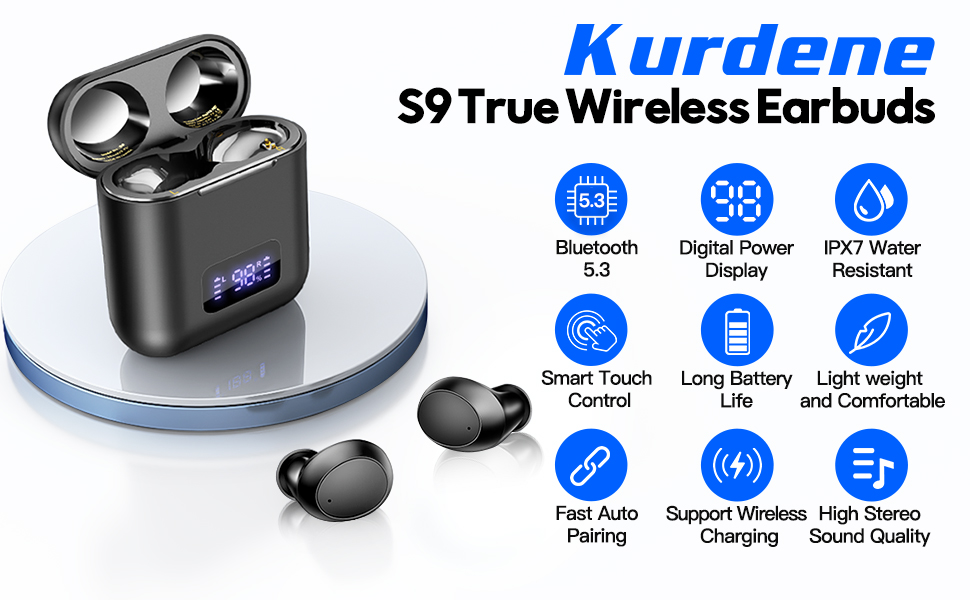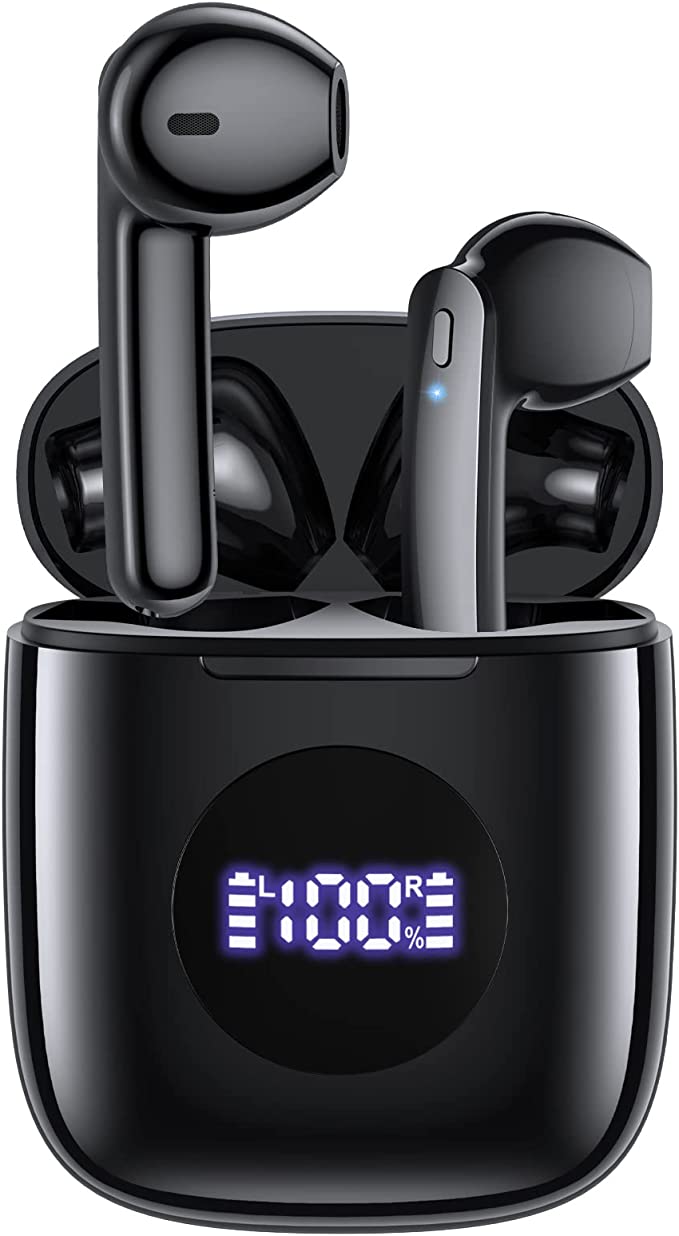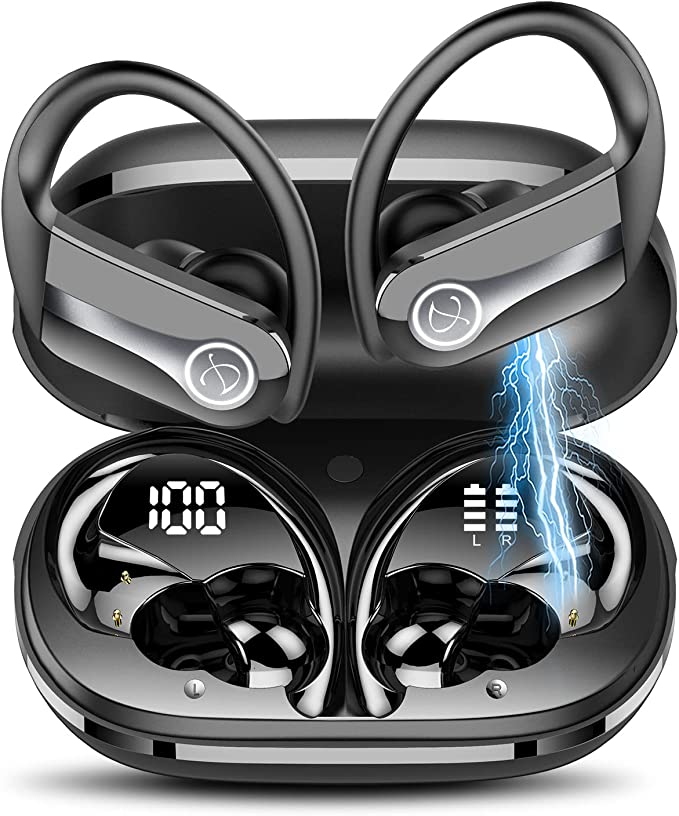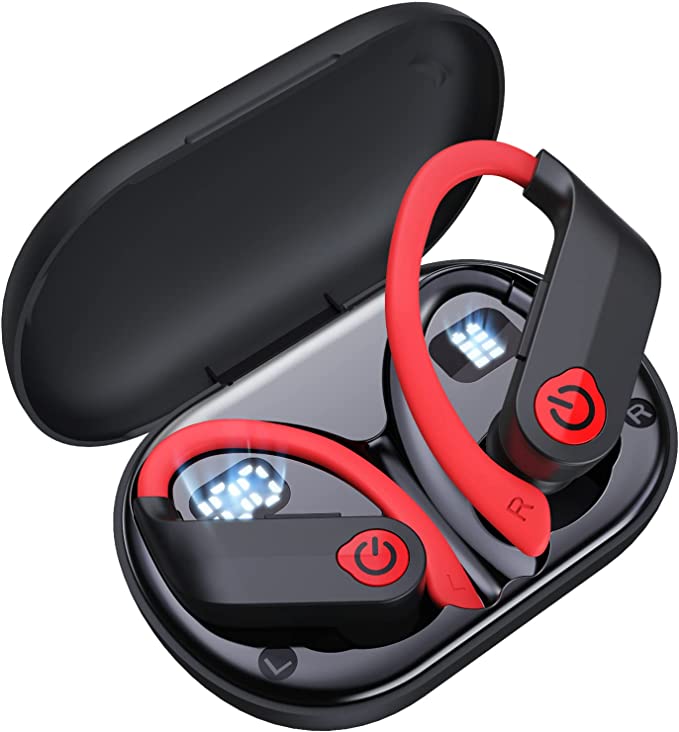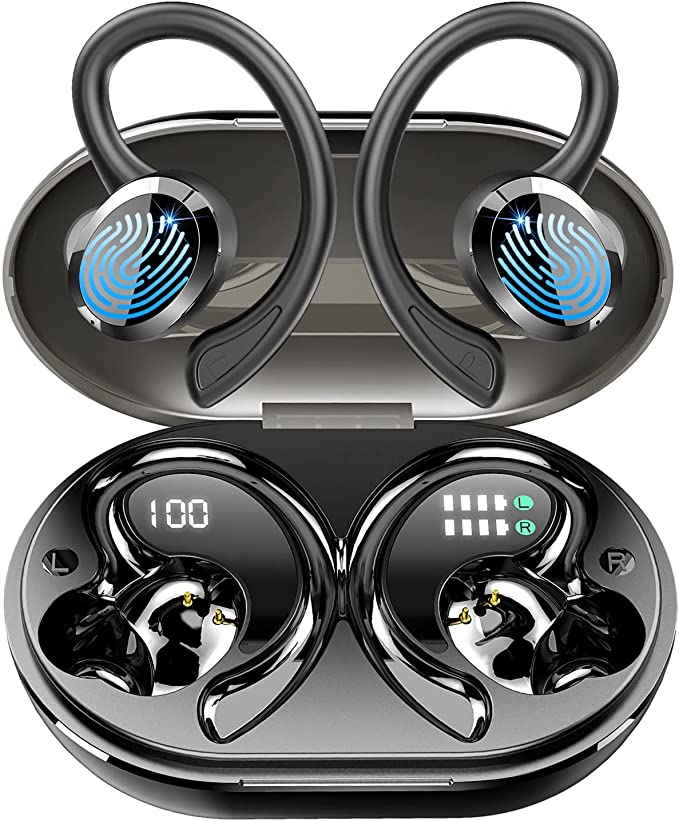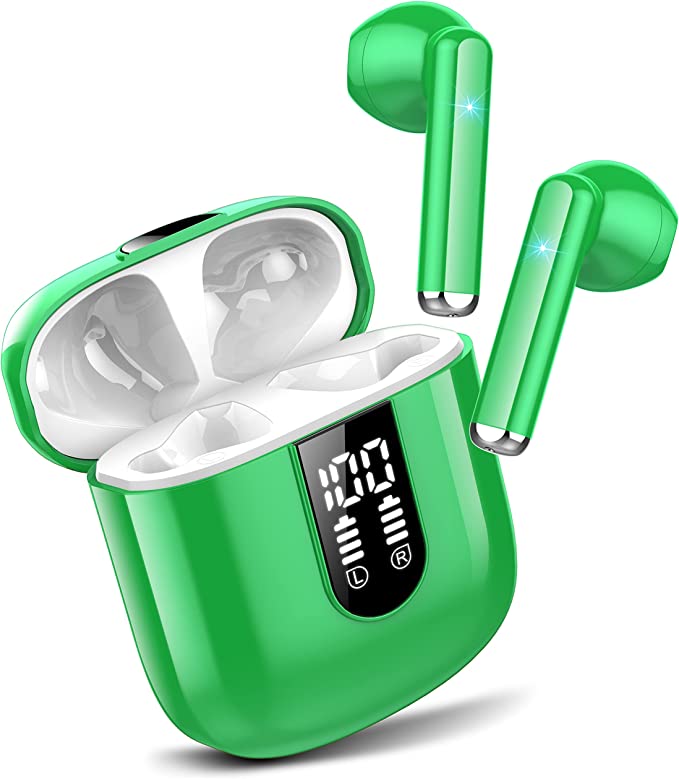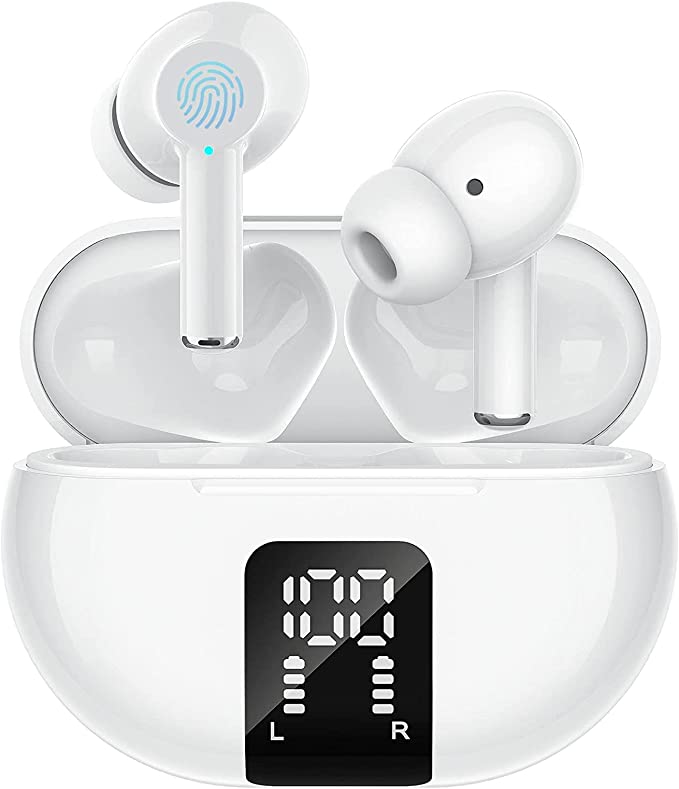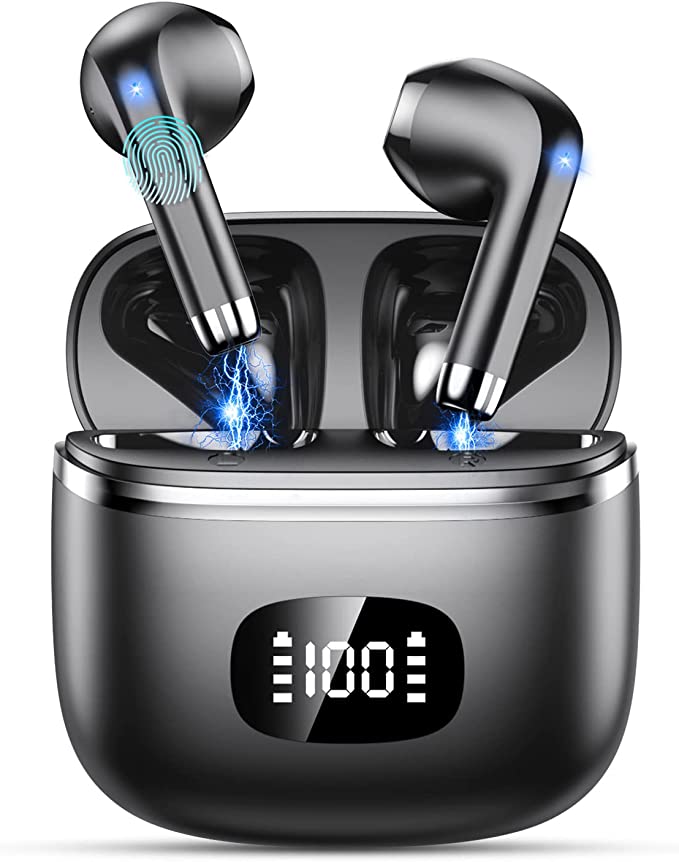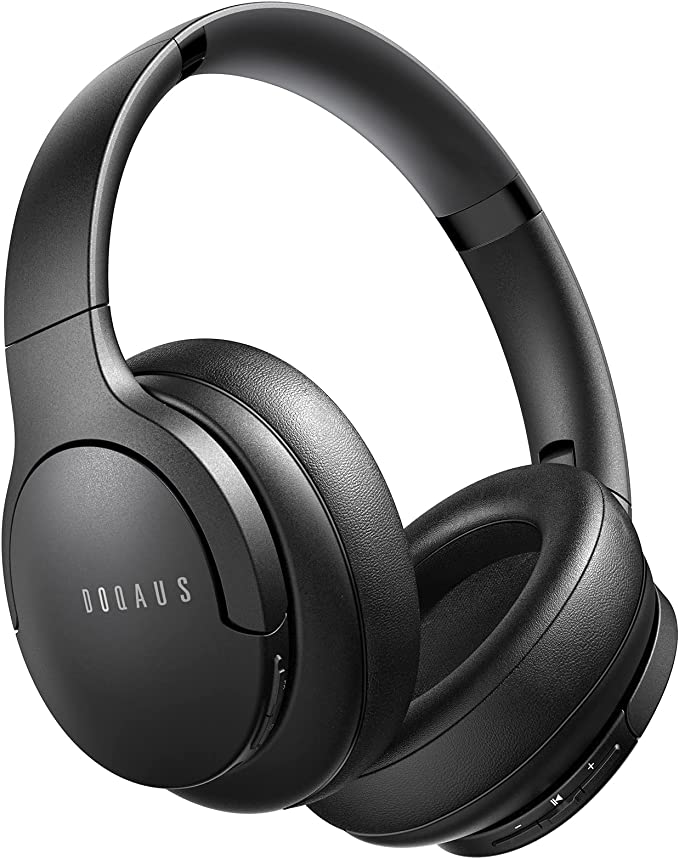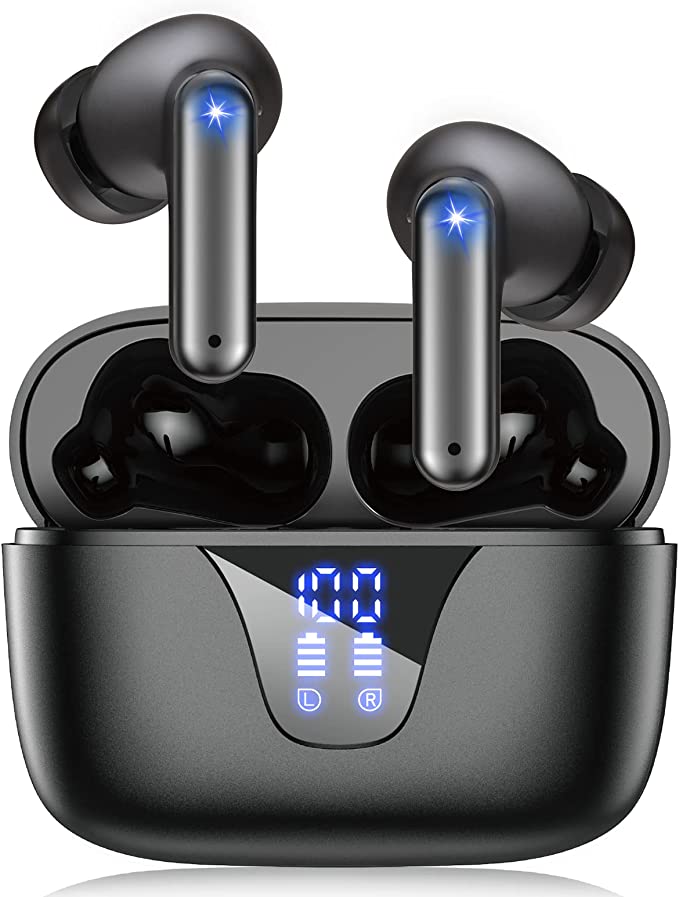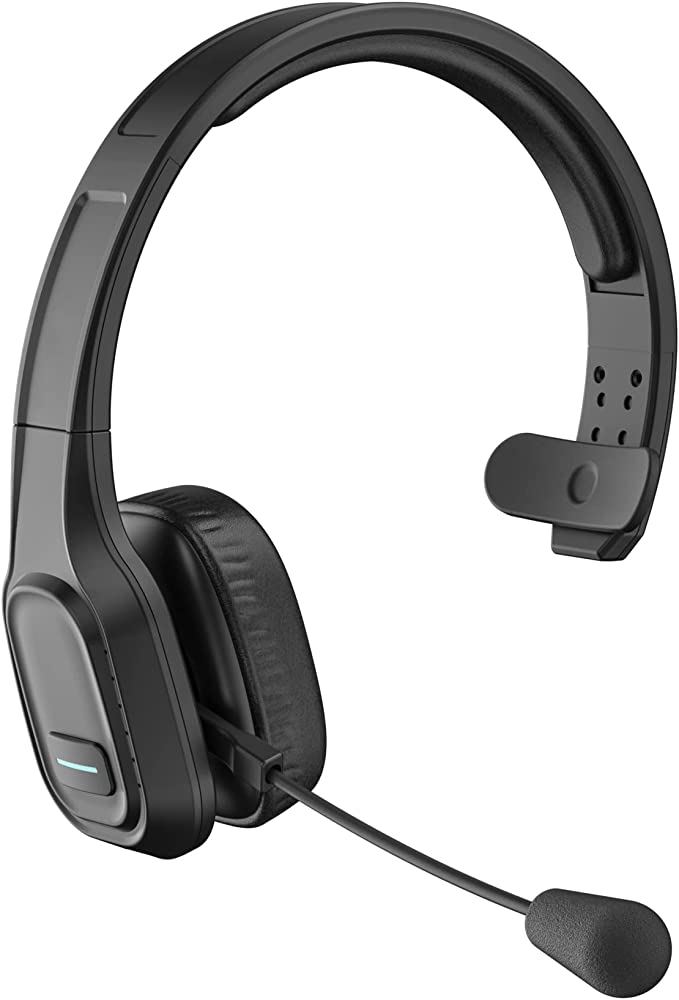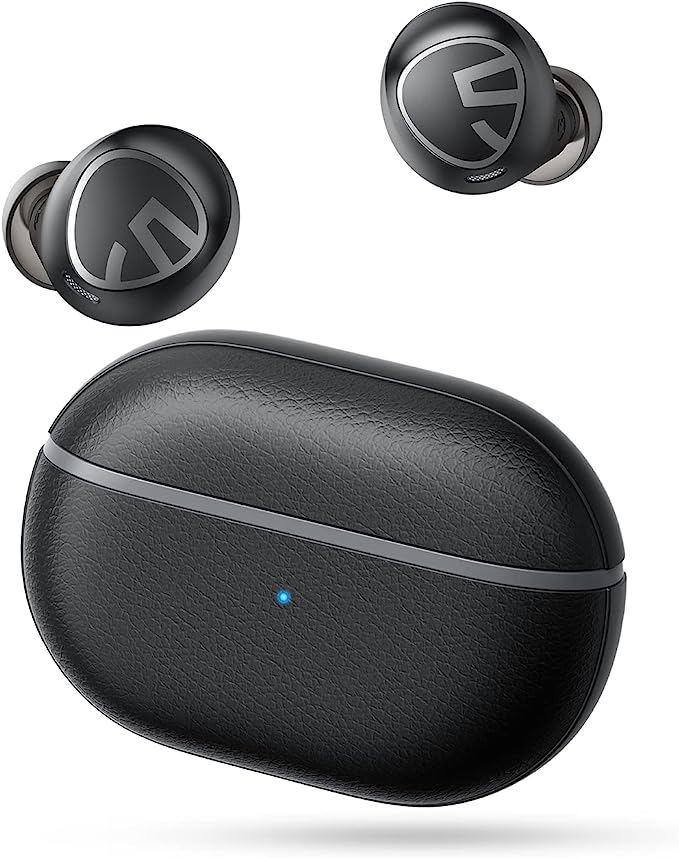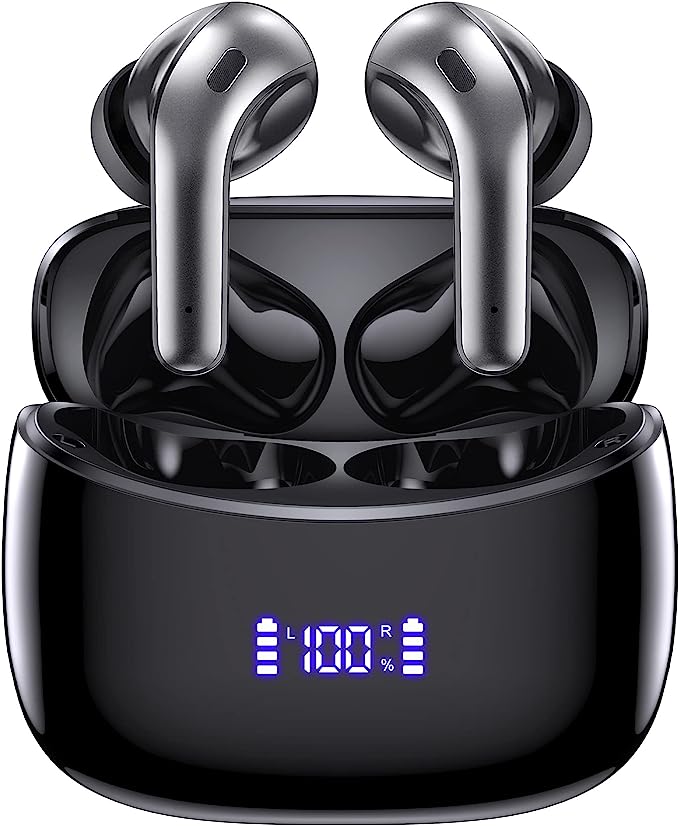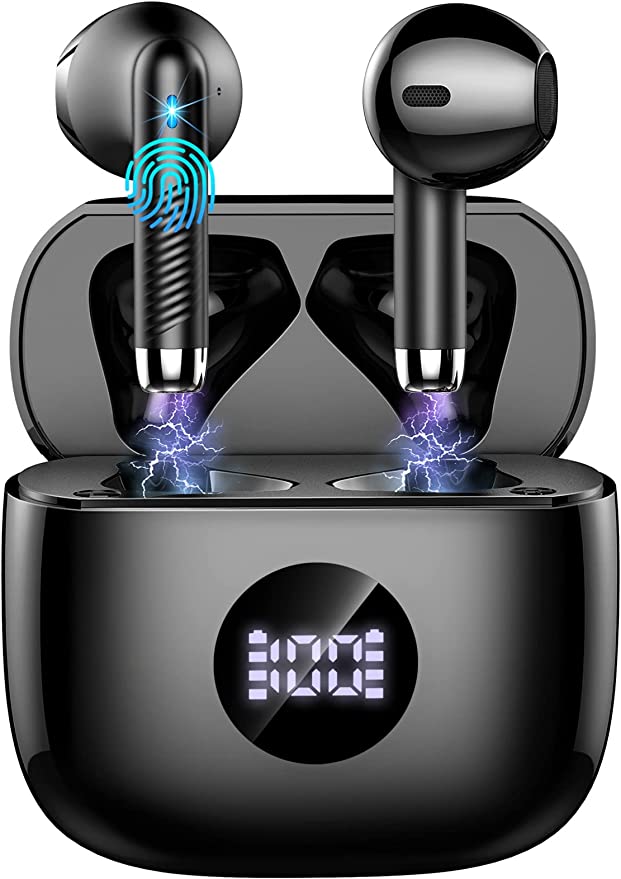VRIFOZ U8I Bluetooth Headphones: The Science Behind Stable Connections and Workout-Ready Audio
Update on April 29, 2025, 4:10 a.m.
Imagine this: You’re pounding the pavement, rain starting to slick the streets, but the driving beat in your ears keeps your rhythm strong. Or perhaps you’re navigating the morning commute, packed tightly on a train, yet completely lost in the world of an engaging podcast. These moments of personal audio escape, woven seamlessly into the fabric of our active and mobile lives, are largely thanks to the marvels of modern wireless earbud technology. Devices like the VRIFOZ U8I Bluetooth Headphones are designed precisely for these scenarios – promising reliable sound for workouts, the gym, or just life on the move.
But have you ever paused to wonder how these tiny devices pull it off? What magic allows music to flow wirelessly, calls to come through clearly, and the earbuds themselves to withstand the rigors of sweat and motion? Let’s embark on a journey together, peeling back the layers to explore the science and engineering tucked inside these wireless sports earbuds, based on their described features and the fundamental principles behind them.

The Unseen Handshake: Demystifying Bluetooth 5.3 Stability
Think of Bluetooth as the invisible choreographer managing a complex dance between your phone and your earbuds. It’s a short-range wireless technology using radio waves to transmit data – in this case, your precious audio stream. The VRIFOZ U8I earbuds feature Bluetooth 5.3. According to the product description, this version aims for “quicker pairing and more stable connections.”
What does this mean for you? “Quicker pairing” translates to less time spent fumbling in menus and more time enjoying your audio. “More stable connections” is where the real magic happens during use. While Bluetooth version numbers don’t always signify giant leaps, minor increments like 5.3 often focus on refining efficiency and robustness, particularly how the devices handle interference. Imagine a crowded gym, thick with competing wireless signals from phones, watches, and other headphones. A more stable Bluetooth connection, as intended by version 5.3, means fewer frustrating dropouts or stutters in your music – a smoother, more consistent audio stream. It also contributes to better synchronization between sound and picture if you’re watching videos on your paired device. This unseen handshake, managed by Bluetooth 5.3, is the fundamental bedrock upon which your wireless listening experience is built.

Crafting Your Personal Soundscape: Drivers, Chips, and the Quest for ‘HiFi’
Ultimately, earbuds exist to deliver sound. The VRIFOZ U8I aims for “high-quality stereo sound” with “rich, powerful bass,” attributed in its description to “upgraded dynamic drivers and CSR chips.” Let’s unpack that.
At the heart of most earbuds like these are dynamic drivers. Think of them as incredibly miniaturized versions of traditional loudspeakers. An electrical audio signal energizes a coil, creating a magnetic field that moves a small diaphragm back and forth very rapidly. This vibrating diaphragm pushes air, creating the sound waves that travel down your ear canal and are interpreted by your brain as music, voices, or effects. “Upgraded” suggests the manufacturer has made design choices intended to improve the driver’s performance – perhaps optimizing the diaphragm material, magnet strength, or enclosure acoustics.
The challenge in any tiny earbud is physics: creating deep, impactful bass often requires moving larger volumes of air, which is difficult for a small driver. Engineers constantly balance low-frequency response with clarity in the mid-range and treble.
The mention of “CSR chips” points to the integrated circuits responsible for managing the Bluetooth connection, decoding the digital audio signal sent from your phone, and processing it before sending it to the drivers. These chips play a crucial role in the overall sound signature.
What about “HiFi Bass Stereo”? “HiFi,” or High Fidelity, is a term historically used to describe audio equipment that reproduces sound very accurately, with minimal distortion, close to the original recording. In the context of affordable earbuds, it’s best understood as an aspirational goal – indicating the intention to deliver clear, balanced stereo sound with noticeable bass presence, rather than a guarantee of meeting strict audiophile standards. The combination of the drivers and processing chip aims to create an enjoyable listening experience for music and podcasts on the go.
Braving the Elements (and Sweat): The Science and Reality of IPX7 Waterproofing
Workouts mean sweat. Outdoor runs can encounter unexpected downpours. Protecting the delicate electronics inside earbuds from moisture is paramount for durability, especially for a product marketed for sports. The VRIFOZ U8I carries an IPX7 waterproof rating.
Let’s decode this rating, which comes from an international standard (IEC 60529). The ‘IP’ stands for Ingress Protection. The ‘X’ means it hasn’t been rated for dust protection (or the rating isn’t being claimed). The ‘7’ relates to liquid protection. Specifically, IPX7 signifies protection against temporary immersion in water under standardized conditions: up to 1 meter deep for up to 30 minutes. Think of it like a well-sealed container rated to withstand being dropped briefly into a puddle or sink, not designed for prolonged underwater use.
The product description mentions that nano-coating technology is employed. This involves applying an extremely thin, invisible layer to the internal components or external surfaces. This coating is hydrophobic – it repels water molecules, causing them to bead up and roll off, much like wax on a car’s paintwork. This prevents sweat and rainwater from easily penetrating sensitive areas and causing damage.
This IPX7 rating, therefore, provides significant peace of mind. You can exercise intensely, dripping sweat, or get caught in the rain without immediate fear for your earbuds’ survival. However, there’s a crucial scientific caveat: Bluetooth signals (which are radio waves) do not travel well through water. Water absorbs radio waves very effectively. While the earbuds might survive a brief dip, don’t expect to swim laps while listening to uninterrupted music streamed from your phone poolside. The IPX7 rating is about water resistance for durability in wet environments, not reliable underwater operation.

“Can You Hear Me Now?” – Unpacking CVC 6.0 for Clearer Calls
Beyond music and podcasts, earbuds are frequently used for phone calls. The VRIFOZ U8I includes a built-in microphone equipped with CVC 6.0 noise cancellation technology. It’s vital to understand what this means, and what it doesn’t mean.
CVC stands for Clear Voice Capture. Unlike Active Noise Cancellation (ANC) which uses microphones to cancel out ambient sound for the listener, CVC works its magic on the outgoing signal from your microphone. Think of it as a sophisticated filter or a vigilant “bouncer” standing at the entrance of your microphone. Its job is to listen to all the sounds being picked up – your voice, the traffic noise, the office chatter – and use algorithms to identify your speech patterns while actively suppressing the surrounding unwanted background noise.
The result? The person on the other end of the call hears your voice more clearly, with less of the distracting environmental sounds interfering. This CVC 6.0 technology, as described, aims to “effectively block out external noise” specifically for improving the clarity of your hands-free calls, making conversations more intelligible when you’re driving, walking down a busy street, or in other moderately noisy situations. It doesn’t make the world silent for you, but it helps you sound clearer to others.

Fueling Your Flow: Understanding Battery Life and Power
Wireless devices are only as good as their batteries. The VRIFOZ U8I houses a rechargeable Lithium Polymer (Li-Poly) battery, according to the product information. Li-Poly is a common choice for compact electronics because it offers good energy density (storing a lot of power in a small space) and can be formed into flexible shapes, fitting neatly within an earbud’s design.
The key performance figures claimed in the description are impressive for this type of device: up to 16 hours of continuous wireless listening on a single charge, and a relatively quick 2-hour charging time. A standby time of 250 hours is also mentioned, indicating low power draw when connected but not actively playing audio.
What does 16 hours of playtime mean in practice? For many users, that could translate to a full week’s worth of hour-long commutes, several gym sessions, or long walks, all without needing to reach for the charger. This extended endurance is crucial for reducing “charging anxiety” and ensuring the earbuds are ready when you need them, providing the sustained power required to fuel your daily activities and workouts.

The Invisible Architecture: The Science of a Secure and Comfortable Fit
An earbud can have stellar sound and battery life, but if it’s uncomfortable or constantly falling out, the experience is ruined, especially during exercise. The VRIFOZ U8I addresses this through its ergonomic design, featuring an in-ear form factor, a stabilizing ear fin, and four sizes of included ear tips (XS, S, M, L).
There’s science behind why this matters. The in-ear design places the earbud partially within the ear canal. The ear fin is designed to tuck into the curves of your outer ear (specifically, the concha), using the ear’s natural shape as leverage to provide extra stability and prevent the earbud from shifting or dislodging during vigorous movement like running or jumping.
The multiple ear tip sizes are critical for two reasons. First, finding the right size creates a snug yet comfortable seal inside your ear canal. This seal is acoustically important – it helps improve the perception of bass frequencies (by preventing sound leakage) and provides a degree of passive noise isolation, blocking out some external sound naturally. Second, a proper fit distributes the earbud’s minimal weight evenly, preventing pressure points and enhancing long-term comfort. What feels fine for 10 minutes might become irritating after an hour if the fit isn’t right. The inclusion of multiple sizes acknowledges that ear canals vary significantly from person to person. A cable clip is also mentioned, helping to manage the short wire connecting the two earbuds and prevent snagging.

Bringing It All Together: The VRIFOZ U8I in Context
Looking at the VRIFOZ U8I through the lens of its described technologies reveals a device aiming to be a versatile audio companion for an active life. The choice of Bluetooth 5.3 targets reliable wireless connectivity, the foundation of the entire experience. The dynamic drivers and audio processing work towards delivering an enjoyable sound profile for music and calls. The IPX7 rating provides crucial durability against the inevitable sweat and occasional rain encountered during exercise. CVC 6.0 focuses on enhancing call clarity for the person you’re speaking with. The 16-hour battery life offers substantial endurance, while the ergonomic design with ear fins and multiple tips addresses the critical aspects of stability and comfort during movement.
No single piece of technology exists in isolation. It’s the careful integration of these elements – connectivity, audio reproduction, environmental resistance, communication clarity, power management, and physical design – that aims to create a seamless and reliable user experience. By understanding the science and engineering principles behind these features, even at a basic level, we can better appreciate the intricate dance of technology happening within these tiny devices, empowering us to choose the tools that best soundtrack our own unique rhythms of life.
